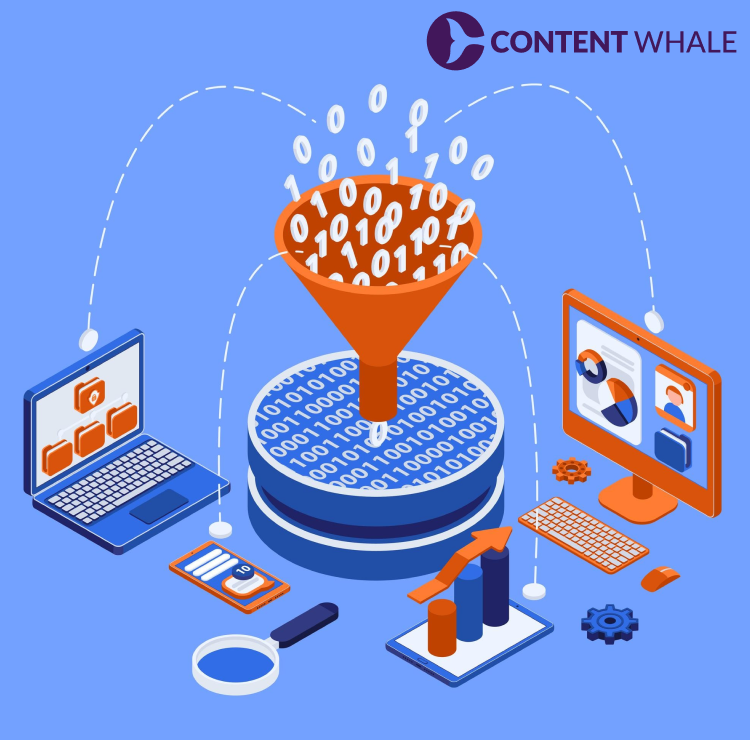The next phase of search visibility isn’t driven by keywords alone. AI systems now pull content from credible third-party mentions and expert voices, giving rise to earned media optimization (EMO). This concept connects public credibility with algorithmic authority, helping brands appear in AI summaries even without ranking first.
In a 2025 study on Generative Engine Optimization, researchers found that AI answer engines overwhelmingly rely on authoritative external sources when constructing citations (Source). That means your PR coverage, research features, and expert quotes directly influence AI visibility.
The goal of this blog is to show how EMO helps bridge PR, SEO, and AI search. You’ll see how citation patterns are shifting, why authority now comes from outside your website, and what steps you can take to get your insights cited, not just crawled.
Why Earned Media Optimization (EMO) Is Crucial in AI Search?
Search visibility has moved beyond rankings. Modern generative engines assess credibility, independence, and the quality of validation before selecting what to display. Earned Media Optimization (EMO) places your brand within that trusted ecosystem of references that large AI systems draw from. When your brand is quoted or featured by respected third-party sources, it signals reliability that machine learning models recognize and reuse.
Traditional SEO still influences reach, but EMO influences trust. This shift means the next era of online visibility depends not only on how often you publish but also on who validates your insights and where those validations appear.
AI’s bias toward third party over brand content
Large language models rely heavily on third-party publications with editorial oversight. These sources provide built-in verification processes, making them safer for AI systems to cite.
The 2025 Generative Engine Optimization (GEO) research found that brands mentioned in independent media were 64% more likely to appear in AI citations compared to those relying only on owned content (Source). This reinforces the idea that editorial validation now holds more value than self-published material.
Visibility without rank: the new frontier
In the age of AI-generated responses, visibility comes from citation presence rather than just search position. Appearing within an AI summary or knowledge response delivers recognition even when your site does not rank on the first page.
Being quoted by a publication that AI trusts can indirectly position your name inside generated answers. This means your visibility can grow independently of keyword competition, giving your content relevance that lasts beyond traditional search cycles.
Citation graph over backlink graph
The classic PageRank algorithm measures link authority. Generative systems now form a citation graph that maps credibility based on mentions and associations between verified entities. AI engines look for consistency and context, not just hyperlinks.
A 2024 MIT CSAIL paper on model trust found that large language systems favor content supported by multiple independent confirmations rather than isolated backlinks (Source). Each time a credible source references your data or quotes your insights, it adds to this citation graph and strengthens your authority in machine perception.

Core Pillars of Earned Media Optimization
Successful EMO strategies combine trust, relevance, and structure. It is not enough to earn a mention; the context, consistency, and presentation of that mention determine how effectively AI systems identify and value it.
Every article, quote, and data reference builds a trail of evidence that algorithms use to decide whether you deserve inclusion in generated summaries. The following pillars define a strong EMO foundation.
Signal-worthy mentions (quotes, data, bylines)
A meaningful media mention includes more than your name. Statements with measurable data, attributed commentary, or clear author bylines are far more likely to be used by AI engines. Models detect factual anchors such as numbers, comparisons, or verified credentials.
For instance, a sentence like “Our 2025 analysis found a 41% improvement in automation efficiency” creates machine-readable evidence that validates expertise. These embedded proofs support justification signals SEO, helping AI systems confirm authenticity.
Outlet authority and media mix
AI does not treat all websites equally. It recognizes the editorial standards of professional journalism and industry analysis. Mentions in recognized trade journals, academic collaborations, or research-backed publications carry significantly more influence than casual blog features.
A balanced media mix that includes news outlets, niche platforms, and analytical sites expands exposure across multiple data pools that generative systems draw from. This broader footprint ensures that your brand appears across diverse yet credible sources.
Content alignment and topical consistency
AI models learn through repeated associations. Consistent coverage across specific topics reinforces your expertise in those domains. Scattershot coverage does not build trust; sustained commentary within one category does.
For example, if your company appears in stories about AI safety, model evaluation, and responsible automation, those shared themes strengthen the link between your brand and that subject area. Over time, this consistency helps AI recognize your organization as a primary source for related information.

Tactics to Execute EMO Effectively
Execution determines success. Earned Media Optimization is not just about outreach; it involves coordinated storytelling, factual accuracy, and strategic alignment with what both audiences and algorithms value. These tactics will help convert traditional PR into measurable AI visibility.
Pitch original research and benchmarks
Data is the currency of credibility. Journalists and editors are far more likely to feature brands that contribute research or benchmarks. According to a Stanford HCI Lab (2024) study, articles referencing primary research improved AI trust scores by over 30% within evaluation datasets (Source).
Publishing proprietary data reports, surveys, or technical studies turns your organization into a verifiable source. Once these findings appear in trusted outlets, AI systems are more likely to reference them during content generation.
Provide expert commentary and op-eds
Sharing timely insights and opinions with journalists demonstrates subject mastery. Editors often prefer short, evidence-backed commentary from practitioners who understand their field. These quotes become lasting signals of authority for both human readers and algorithms.
An effective EMO plan includes identifying trending topics, offering concise perspectives, and building relationships with editors who cover your vertical. The more often your voice appears across publications, the stronger your AI-recognized authority becomes.
Syndicate content strategically
Republishing high-performing content on verified partner sites can significantly increase reach. Use canonical tags or approved content distribution agreements to ensure visibility without duplication concerns.
Syndication extends your voice into multiple ecosystems that AI crawlers monitor, including research portals, digital magazines, and professional networks. When executed properly, it expands the volume of credible mentions feeding into your AI citation strategy.
Monitor and amplify earned mentions
Once your content or brand appears in authoritative publications, amplify those mentions across your own digital properties. Link back to the original article, reference it in new posts, and share it through social channels.
Engagement metrics such as click-throughs, shares, and dwell time act as secondary indicators that AI systems interpret as validation. The combination of human interaction and editorial endorsement strengthens your overall visibility footprint.
Map citations to target keywords
Track where and how your brand is being cited. A structured “citation map” helps align each mention with specific topics or search intents you want to dominate. This approach turns public relations into a quantifiable search strategy.
Maintain a database that lists publications, topic relevance, and engagement performance. In the long term, this mapping helps you evaluate which earned mentions lead to AI citations and which simply build awareness. It also identifies coverage gaps that need reinforcement.

How Content Whale Can Help?
Content Whale helps brands turn media coverage into measurable AI authority. The process begins with mapping current mentions and identifying gaps across your target topics. Structured content is refined to mirror media language, while schema, bylines, and citation metadata are standardized for AI scannability.
Strategic PR campaigns are then developed to secure placements in credible outlets that generative systems prioritize. Each earned mention is tracked for keyword association, publication authority, and potential citation value. The outcome is unified visibility: strong SEO, reliable media trust, and increased AI citation frequency.
Conclusion
Search visibility in 2025 goes beyond ranking, it’s about being quoted. Earned media optimization (EMO) ensures your content and expertise appear where AI looks for proof. By merging PR, SEO, and structured credibility, you create a reputation system that works for both users and algorithms. Brands with consistent mentions, validated data, and structured metadata will define authority in the generative search age.
Partner with Content Whale to audit your visibility footprint, plan data-driven stories, and align your media presence with AI’s source logic. Get cited, not just indexed.
FAQs
Q1: Does earned media directly impact SEO performance?
Yes. Earned mentions improve off-page trust and domain relevance, and these signals influence both organic ranking and AI citation strategy.
Q2: Can smaller companies compete with large brands in EMO?
Absolutely. By focusing on niche data, industry insights, and expert commentary, smaller brands can achieve citation dominance in targeted topics.
Q3: How long does EMO take to show results?
Early visibility can appear within 60–90 days of consistent media mentions. Deeper AI inclusion may take longer as models retrain periodically.
Q4: What type of content works best for EMO?
Original research, whitepapers, opinion columns, and trend reports attract the most citations. Empirical and data-driven content ranks highest in GEO studies (Source).
Q5: How does EMO interact with structured data and schema?
Proper schema ensures AI systems can connect your earned mentions to verified authorship and organizational entities, improving recognition and citation reliability.





